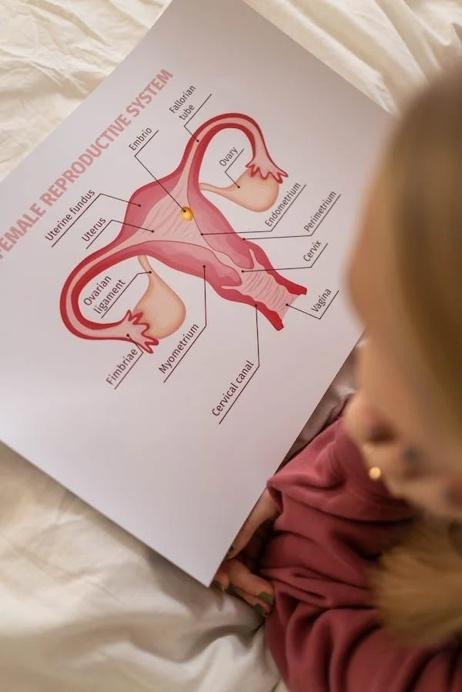Bodily Anatomy: Assigned Female At Birth
bloomwell,
#sexed

Let's start with the basics of the stuff inside that we can’t see. Everyone has organs such as the brain, lungs, heart etc. However, those assigned female at birth also have the female reproductive system inside them. This consists of a uterus, fallopian tubes, cervix, ovaries and vagina. The average dimensions of the uterus in an adult female are 8 cm long, 5 cm across, and 4 cm thick (National Library of Medicine).

It is called the reproductive system because it is where pregnancy takes place and where the baby grows (see page on how babies are made) so it's how humans make more humans, also known as reproduction.
Although its main purpose is allowing a place for babies to grow, the uterus affects the body from puberty onwards.
Puberty is phase of growing where the human body goes through changes as we become adults, for those assigned female at birth this usually begins around the age of 11 (NHS). (see page on puberty).

One of these changes is the reproductive system starts getting ready for being an adult and making babies, the body starts preparing way before we do. A part of the preparation is when an ovary releases a tiny egg once a month. Ovaries are like small bags which store the eggs in the body. However, these eggs aren’t like chicken eggs we are used to instead they are so tiny that we can’t see them without using technology! A human egg is half of what eventually makes a baby but this can’t happen without the help of sperm which is stored in the male reproductive system.
When an egg leaves the ovary it travels down the fallopian tube (like a waterslide) till it gets to the uterus. Each month lining of the walls of the uterus build up and get thicker to act as padding for the egg, however the egg will only stick to the padding if it meets sperm in this journey, and if it does then it will eventually grow into a baby! However if there is no sperm to be met (which there won’t be unless intercourse has happened - see page on how babies are made), the egg will not stick to the walls and continue its journey down to the vagina. The body sees this and so the lining is also released as the egg did not stick to it. Both the egg and lining slowly travel down the vagina and leave the body out of the vagina opening which is one of the three holes in the private parts. The lining of the uterus can take 3-7 days to leave the body which consists of blood, some thinner and some thicker. Although there is blood, this isn’t an injury and is a normal part of the body that anyone with a female productive system goes through from puberty till approximately the age of 45-55 (national institute of health). This process is known as a period (see more on periods) and takes place approximately a month apart from each other, however when you first start experiencing them they may be a bit more uneven but throughout puberty they become more predictable and easier to track.
This brings us to the parts of the body that we can see. Firstly since we have already talked about the vagina lets discuss the rest of the private parts. Everyone, unless for specific medical reasons, has a bum hole where we poo from. However people assigned female at birth have a vulva where as people assigned male at birth have a penis and testicles (see male anatomy for kids). The vulva has two holes, one being the vagina (where periods come out from) and the other is called the urethra, which is a fancy name for a pee hole as its where we pee from. These two separate holes and the bum hole mean in total the female private parts have three different holes, for three different purposes!

Share your thoughts
We're on a mission to bring our community the best content! Loved this article? Got ideas to make it even better or suggestions for future topics? We'd love to hear from you! Your input shapes the future of our content.